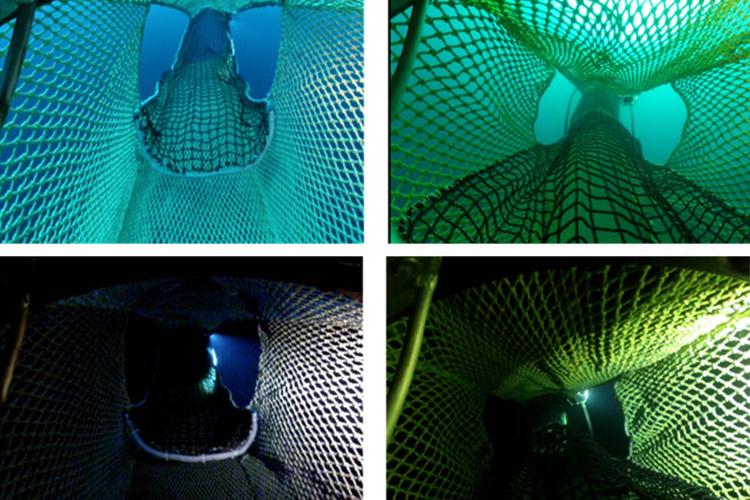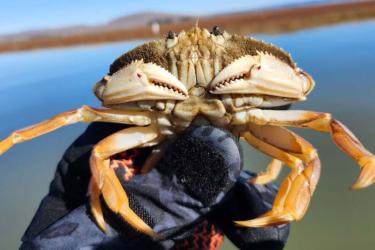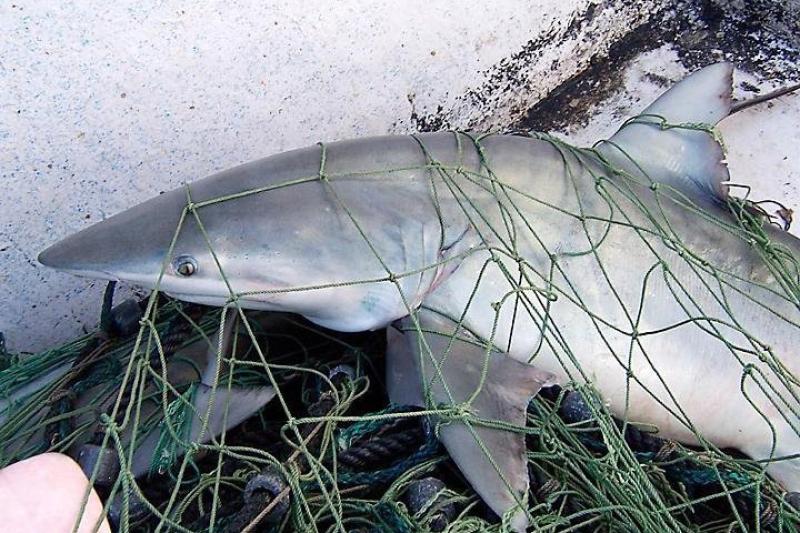The development of efficient, cost-effective light-emitting diode (LED) technology has led to a growing list of innovative residential and industrial applications. With NOAA Fisheries’ Bycatch Reduction Engineering Program funding, researchers have found that LEDs can play an important role in productive and sustainable fisheries as well.
A study by the Pacific States Marine Fisheries Commission and the Northwest Fisheries Science Center shows that LEDs are very effective in directing Chinook salmon to escape windows in Pacific hake trawl nets. Chinook salmon bycatch in the Pacific hake fishery, the largest groundfish fishery on the West Coast, can be an issue; if too many Chinook salmon are caught, management measures, such as temporary closures, are implemented to conserve this threatened and endangered species.
Data show that Chinook salmon are much more likely to exit the nets where lights are placed—86 percent of escaped salmon used the well-lit, LED-framed openings. While further research is underway, the data suggest the LEDs can increase the salmon’s escapement overall.
We caught up with Mark Lomeli, a researcher at the Pacific States Marine Fisheries Commission, for more on this important study.
Tell us how this study came about.
It’s always a concern for everyone involved when an ESA-listed species is being caught, so we wanted to develop a salmon excluder design to lower their incidental catches. Together with fishermen, we came up with a design that uses two sets of large, open escape windows that allow the salmon to swim out. We used a camera with an LED light attached to it to see if the escape windows were working, and we noticed the salmon seemed to be swimming toward the light. That made us wonder if we could modify our design with lights to influence where the salmon escape and how effectively they escape.
Our data and video observations indicate that at deeper, darker depths where trawl nets go, light from the LEDs are enhancing the salmon’s ability to perceive the escape areas and the areas outside the nets.
Wouldn’t the lit escape windows help the hake escape, too?
No, they’re not nearly as strong swimmers as Chinook salmon. Our design is meant to exploit the strong swimming behavior of the salmon—they’re quite powerful and can get to where they’re trying to go. When hake are toward the back of the trawl nets, where the excluder device is positioned, they’re generally too fatigued to swim out the escape windows.
Can you shed some light on the type of LEDs used on the escape windows? Are they similar to the typical bulbs you see in homes?
They’re fairly similar to LED lights you might see at the store. The lights we used on this bycatch reduction device are specifically manufactured by an outfit in Florida for longline fishing gear, so they’re able to stand up to harsh ocean conditions.
Can this technology be used to reduce bycatch of other species?
Yes, this technology has proven effective at reducing bycatch of eulachon (an ESA-listed species of Pacific smelt), and juvenile rockfishes and flatfishes in the ocean shrimp trawl fishery off Oregon. We also think the LEDs could be used in other fisheries—for example, in the walleye pollock midwater trawl fishery in Alaska—to reduce Chinook salmon bycatch.
Have fishermen adopted this bycatch reduction device since you published your research results last year?
Many fishermen are aware of this technology now and use it if they think Chinook bycatch will be an issue. It’s easy to use, relatively cheap, and widely available. You can easily clip the lights to the webbing of the net around the escape openings. With these research results in hand, the lights are on the shelf for them when they need them. We think these LEDs are low-hanging fruit for contributing to the recovery of this species, and can also play an important role in the stability of this fishery.
Watch this video showing an open escape window bycatch reduction device designed to reduce Chinook salmon bycatch in the Pacific hake midwater trawl fishery.





